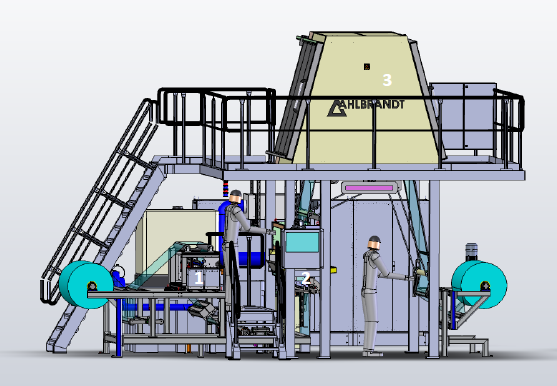DYEING

This process is giving woven or knitted fabric its intended colour, crucial to its ultimate use.
When the dyeing process is carried out during the first processing stages, for example on staple fibres, a better colour fastness can be achieved; bulk dyeing refers to the system used to dye a staple fibre before it is spun, this process is carried out in perforated baskets and although there may be areas where the dye does not penetrate completely, in subsequent spinning operations these areas are mixed with the thoroughly dyed fibre, thus ensuring an overall even colour.
Yarn dyeing is carried out after the fibre has been spun into yarn. Yarn dyeing is preferred for manufacturing Jacquard or striped fabrics; this dyeing method grants a good colour fastness since the dye penetrates the fibres and reaches the yarn core.
Skeins are dyed in hanks, spools are dyed in autoclaves and warp yarns are dyed in perforated beams loaded in autoclaves.
Piece dyeing is carried out on several types of machines and the material can be open-width or rope dyed. A good dyeing strictly depends
on different parameters and conditions that can be evaluated immediately (such as good consistency of the dye and repeatability) or which require specific fastness evaluation (manufacturing, use, dry or wet processing) that can be controlled
only by means of subsequent laboratory tests.
The machines used are chosen according to the material to be processed. The crucial requisitesare the following:
- protection of the substrate
- repetitiveness of the results
- cheapness of the process
To carry out a dyeing process it is necessary to:
- Dissolve or disperse the dye in a water bath (with manual, semiautomatic and automatic colour kitchens according to specific preset rules).
- Feed the dye solution in the machine after suitable filtering (automatic colour kitchen, supplementary vats, pumps and filters).
- Transfer the dye from the liquor to the fibre (process and machine).
- Distribute the dye homogeneously on the fibre (process and machine).
- Let the dye penetrate in the fibre structure and fix it (time and temperature).
- Wash or rinse the material to remove the dye on the surface or the unfixed dyeing liquor.
There are two different methods to transfer the dye from the liquor to the fibre:
1- Exhaust dyeing (discontinuous systems). The dye is dissolved or dispersed in the dyeing liquor. The material is immersed in the dyeing liquor and is removed only when the dye has mostly transferred onto the textile to be dyed, distributed homogeneously, well penetrated into the fibre and fixed. At the end of the process the material is washed or rinsed to remove the unfixed dye
2- Pad dyeing (continuous or semi-continuous systems). This process is carried out using mechanical means (pad-batch wetting). The dyeing liquor is distributed homogeneously onto the fabric (i.e. also the dye is distributed homogeneously). In a second stage the dye penetrates into the fabric and is then fixed. At the end of the process
the material is washed.